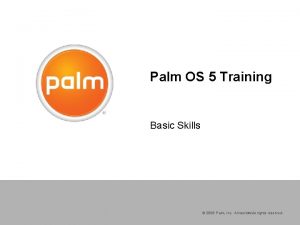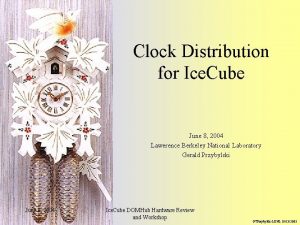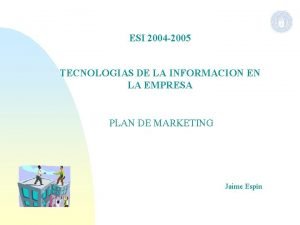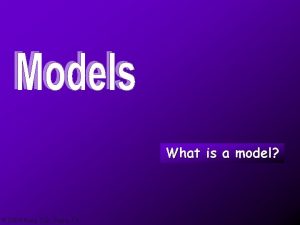2004 Plano ISD Plano TX 2004 Plano ISD




















- Slides: 20

© 2004 Plano ISD, Plano, TX

© 2004 Plano ISD, Plano, TX


© 2004 Plano ISD, Plano, TX

During every waking and sleeping moment of our lives, we are bombarded with of energy. © 2004 Plano ISD, Plano, TX

Most energy waves collide with us or pass right through us without any notice on our part. © 2004 Plano ISD, Plano, TX Waves carry energy, but not matter. However, matter can be used to transfer energy.

Waves that use matter to transfer energy are mechanical waves The matter used to transport the wave is called a medium. What is the medium? © 2004 Plano ISD, Plano, TX

What is the medium? © 2004 Plano ISD, Plano, TX

What is the medium? © 2004 Plano ISD, Plano, TX

In the 15 th century, Leonardo da Vinci observed that while waves move, the medium (water) does not, “like the waves made in a field of grain by the wind, where we see the waves running across the field while the grain remains in place. ” © 2004 Plano ISD, Plano, TX

Water, sound, and earthquake waves are examples of mechanical waves. © 2004 Plano ISD, Plano, TX

Mechanical waves can be classified according to the direction of the motion of matter in relation to the direction of wave motion. © 2004 Plano ISD, Plano, TX

Mechanical waves in which matter moves up and down or back and forth at right angles compared to the direction of wave movement are transverse waves. Click here to see transverse waves in action! © 2004 Plano ISD, Plano, TX

© 2004 Plano ISD, Plano, TX

Mechanical waves in which medium matter moves forward and backward in the same direction the wave travels are longitudinal or compressional waves. Click here to see compressional waves in action! © 2004 Plano ISD, Plano, TX

Waves that do not require matter to transfer energy are electromagnetic waves Electromagnetic waves can travel through a medium, but they can also travel in space or through a vacuum. © 2004 Plano ISD, Plano, TX

Radio waves, X-rays, microwaves, and visible light waves are examples of electromagnetic waves. They can all travel through empty space and they all travel at the same speed. This speed is sometimes called The Speed of Light. © 2004 Plano ISD, Plano, TX

Review the information on waves by filling in the concept map. © 2004 Plano ISD, Plano, TX

energy Waves transfer or carry matter do not move or carry can be classified into two categories mechanical waves include examples such as electromagnetic waves are further classified into are a special type of transfer energy through matter called a medium ____ longitudinal or compression waves transverse waves move matter forward and backward in the same direction of wave movement matter up and down or back and forth at right angles compared to the direction of wave movement includes solids, liquids, gasses do not require matter to transfer energy include examples such as

Bibliography Macaulay, David. (1988). How things work. Boston: Houghton Mifflin Company. pp. 186 Resnick, Halliday, Krane. (1992). Physics. 4 th Edition, Volume 1. New York: John Wiley & Sons, Inc. pp. 417 -418. “What are waves? ” (2002). Texas Science. New York: Glenco Mc. Graw-Hill, pp. 186 -187. © 2004 Plano ISD, Plano, TX
 Parasitism
Parasitism Diferencia entre gran plano general y plano general
Diferencia entre gran plano general y plano general 2004 ford ranger 2.3 firing order
2004 ford ranger 2.3 firing order Copyright 2004
Copyright 2004 Margaret panting 2004
Margaret panting 2004 Deped school calendar 2003-2004
Deped school calendar 2003-2004 Struktur kurikulum kbk 2004
Struktur kurikulum kbk 2004 Gaatn
Gaatn Isi undang-undang nomor 4 tahun 2004
Isi undang-undang nomor 4 tahun 2004 Bildungspläne im vergleich
Bildungspläne im vergleich 2004
2004 Ice cube 2004
Ice cube 2004 Ryan ross 2004
Ryan ross 2004 The age discrimination act 2004
The age discrimination act 2004 Idea 2004 changes
Idea 2004 changes Maj 2004 biologi
Maj 2004 biologi 2004
2004 Copyright 2004
Copyright 2004 Hg 974 din 2004
Hg 974 din 2004 2004 movie
2004 movie Copyright 2004
Copyright 2004






































